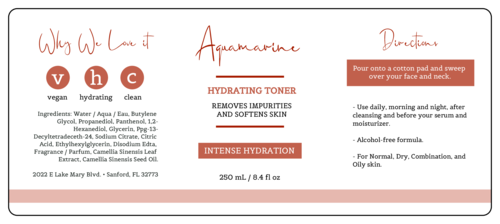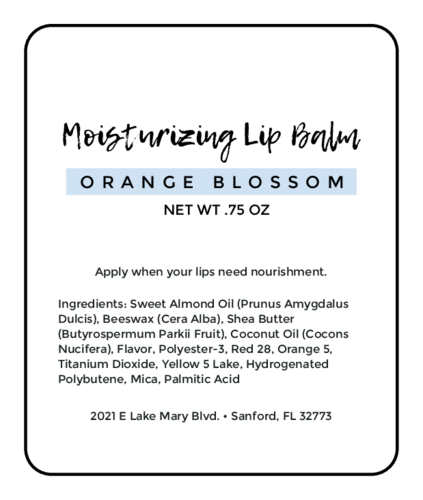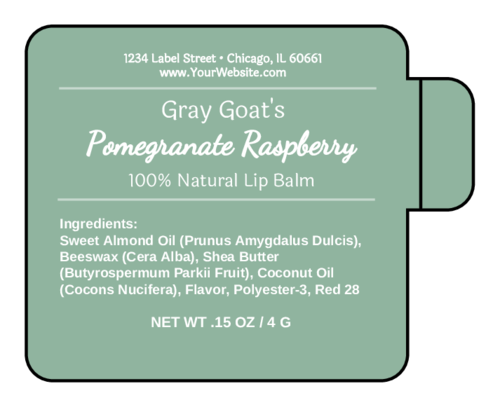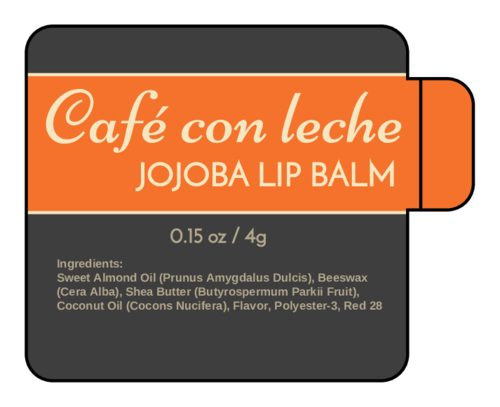What are the FDA Labeling Requirements for Cosmetic Products?
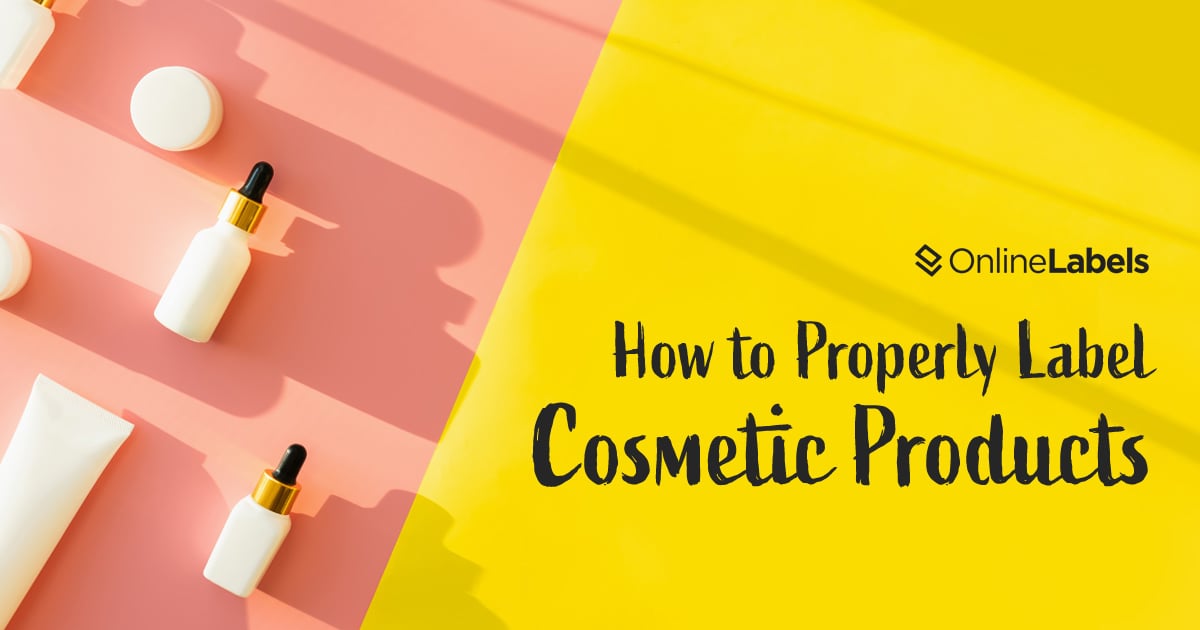
The Food and Drug Administration (FDA) is an organization dedicated to protecting our health. As producers of cosmetics (including soap and aromatherapy products), it’s your responsibility to comply with the regulations and labeling requirements outlined by the FDA.
The information below will help you understand those guidelines and ensure your product is providing consumers with the necessary information they need to stay safe and healthy.
Keep in mind, this is not a comprehensive guide for labeling your cosmetic products, so we strongly encourage you to spend more time familiarizing yourself with FDA’s regulations after reading this article. When you're ready, browse our popular cosmetic labels.
How are cosmetics regulated?
The FDA regulates cosmetic labeling under the authority of both the Federal Food, Drug, and Cosmetic Act (FD&C Act) and the Fair Packaging and Labeling Act (FPLA). The FD&C Act was created in 1938, authorizing the FDA to oversee the safety of food, drugs, and cosmetics. However, it does not require that cosmetics receive FDA approval before going to market, which is where the FPLA comes into play.
What do the FD&C Act and the FPLA say?
The FPLA prohibits cosmetics from being adulterated or misbranded. The product must be safe for the consumer when used according to directions on the label or how people typically use it, and the labeling and packaging shouldn't be misleading.
You’re able to use any ingredients in your product with the exception of the restricted ingredients listed by the FDA. Also be mindful of any color additives you may be using in your products — these do require FDA approval. Just keep in mind that it’s your legal responsibility to make sure your products are safe for their intended use and are appropriately labeled.
The FDA allows you to manufacture cosmetic products out of your own home, as long as you follow all other rules and regulations. There are no specific regulations for good manufacturing practices (GMP), although the FDA provides a GMP checklist that lists what an FDA investigator would look for during an inspection.
The FPLA directs the Federal Trade Commission (FTC) and FDA to issue label regulations for all consumer commodities. If your cosmetics are manufactured for retail (such as in stores or even online orders), they must also meet the FPLA labeling requirements in addition to the FD&C Act requirements.
This Act requires that all consumer commodities should be labeled in a way that reveals the amount of product in the package, the identity of the commodity, as well as the name/place of business of the product's manufacturer. The Act also allows for additional regulations to prevent other forms of consumer deception due to labeling.
How does the FDA define a label?
Both the FD&C Act and the FPLA define the term ‘label’, but their descriptions vary. According to the FD&C Act, a label is "a display of written, printed or graphic matter upon the immediate container," whereas under the FPLA, a label is considered a "written, printed or graphic matter affixed to any consumer commodity or affixed to or appearing upon a package containing any consumer commodity."
What category does my product fall under?
The following definitions are from the FDA website in order to help you identify your product category. Note: The categories aren’t mutually exclusive, e.g. a cosmetic can also be a drug.
Cosmetics
"Product, except soap, intended to be applied to the human body for cleansing, beautifying, promoting attractiveness, or altering the appearance." This can include makeup, shampoo and other hair products, nail products, tanning products, scrubs and other skin products, deodorants, some oral care products, perfumes, and others.
Soaps
Products mainly composed of the alkali salts of fatty acids which can be the only material that results in the product’s cleaning action. If your product meets this definition, it falls under the Consumer Product Safety Commission (CPSC) and isn’t considered a cosmetic under the law, so it won’t need to meet the FDA’s cosmetic labeling requirements. If the product is intended to moisturize the skin, make the consumer smell nice, deodorize the user’s body, or if it contains synthetic detergents, it’s a cosmetic. If it’s intended to treat or prevent disease, such as killing germs or treating skin conditions, it’s a drug.
Visit the FDA’s Soaps and Lotions page for more information on these types of products.
Aromatherapy & Essential Oils
Aromatherapy products are regulated based on their intended use: If the intended use is only to cleanse the body or aimed at a user's looks, it’s a cosmetic. If the use is therapeutic, such as treating disease or affecting the function of the body, it’s a drug. If the intended use is akin to air fresheners and scented candles, it falls under the purview of the CPSC.
Visit the FDA’s page on aromatherapy for additional information.
Drugs
"Articles intended for use in the diagnosis, cure, mitigation, treatment, or prevention of disease and articles (other than food) intended to affect the structure or any function of the body of man or other animals."
A product that fits under both the drug and cosmetic description, such as fluoride toothpastes, antiperspirant deodorants, anti-dandruff shampoos, etc., will need to comply with both sets of regulations.
Still not sure which category your product would fall under? Check here for more information.
How do I label my cosmetics to comply with the FDA?
The FDA’s comprehensive cosmetic labeling guide includes sections on label placement and label content, as well as prominence, type size and ingredient lists. We’ve summarized some of the most important points:
- Necessary content includes the name of the product, net quantity of the contents, directions for safe use, any warnings, an ingredient list, and the business information.
- The FDA guidelines require you list the ingredients in weight order, from heaviest to lightest, and under their most commonly accepted industry standard names.
- The products that require a warning and/or directions for safe use must have the information displayed in a noticeable and prominent way.
- If there’s more than one label, the required information must be on the principal display panel (the label most likely to be shown under customary conditions for sale).
- The label has to be large enough that the required information is prominently displayed in a type size that is easy to read.
- The FDA hasn’t defined and doesn’t regulate the terms, “natural” or “organic,” but keep in mind your labeling has to be truthful and not misleading. However, the U.S. Department of Agriculture (USDA) does regulate the term “organic” under the National Organic Program (NOP).
The FDA has created a small business and homemade cosmetics fact sheet for more frequently asked questions.
Get started on your product labels easily with one of our FDA-compliant pre-designed cosmetic label templates.
How do I label my product if it falls under the drug category?
As you might expect, the requirements for labeling drugs are more extensive than they are for the products listed above. Refer to the FDA’s Drug Guidances on labeling for the specific label requirements they are subject to.
Note: cosmetics that are also drugs should list the drug ingredient(s) first as "active ingredients" before listing the remaining cosmetic ingredients.
Get Started
Ready to begin labeling your products? Get started by shopping cosmetic labels today.
Don't want your labels looking overcrowded with the necessary FDA information? Don't worry! Our multi-layer labels are the perfect solution for this. With these, the top layer easily peels back to reveal additional copy underneath on a base label layer.


